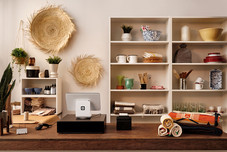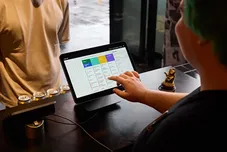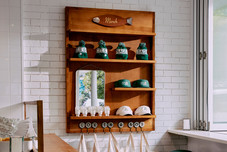Table of contents
If you run a retail business, you’ve no doubt heard about retail analytics. Many people get spooked by the idea of spending hours looking at facts and figures, but the reality is, retail data analytics can help you attract more customers and generate a higher income.
In this article, we’ll explore what retail analytics are, the tools you need to collect them, and how to use them to make better business decisions.
What is Retail Analytics?
Retail analytics covers a range of details related to customers, sales and inventory. Successful businesses use these insights to tailor their marketing efforts with geographical and demographical data behind them. Factors such as age, location, buyer preferences and much more can be discovered using retail data analytics. They are also used to monitor inventory levels by keeping you informed of your best-selling products, and even a product’s popularity at certain times of the year.
Some analytics are also used to determine the optimum layout of your store, placing products where they are most likely to be seen and purchased. Ultimately, it’s all about generating more sales and creating a better experience for your customers.
Which Tools Do I Need to Collect the Data I need?
To maximise the data you use to back up your business decisions, you need the right tools. In most cases, the data you use is only as good as the method used for collecting it. Generally, technology leads the way here, meaning you need the right kind of software to track your sales and performance at all times. Without the right software, your data becomes inconsistent and unreliable.
Here are a few of the tools that make it easy to collect and use data effectively.
1. Point Of Sale
All retail businesses need a high-quality point of sale (POS) system. Products like Square Point of Sale help your business accept transactions, take online payments and track real-time sales data. However, one thing it also does extremely well is reporting. Square’s system gives you all of the powerful analytics you need to track your sales, your busiest hours, most popular products and much more.
2. Inventory management software
Keeping track of inventory in retail is a nightmare if you don’t have the right software. Inventory forms part of your retail analytics, because if you can’t track your stock, you don’t know when you need to order more. You should be using retail analytics to stay on top of your best-sellers, so you can maintain stock and never miss a sale. Because if you don’t have what a customer wants, you can guarantee they’ll find it somewhere else.
Using software like Square Inventory Management, you can track your stock levels, get notifications when you run low, and even receive detailed reporting on the popularity of products.
3. Team management
All retail businesses need good team management software, and that’s what you get with Square Team Management. All of your retail analytics should give you valuable information about your busiest times of the day, week, month and year. With that information, you can more effectively manage rosters, staffing levels, and even schedule things like training in quieter times. The best way to do that is with Square Team Management. You’ll even be able to see who your best-performing salespeople are.
4. Customer feedback
While the data isn’t generated through any of your retail systems, customer surveys are another form of analytics you shouldn’t ignore. You can send email surveys to your customers and gather valuable information about what they love about your business, and maybe the things they don’t love so much. You can use this data when making any decisions that affect the customer experience.
Get Started with Square for Retail
Sell intelligently with our retail point of sale system.
How to use Retail Data Analytics
Because retail analytics are so diverse, there is a lot you can do with them. Ultimately, data should be used to improve business processes, customer experiences and even your sales conversion rates. Basically, analytics help you make better business decisions on everything from opening hours to the brands you stock.
Here are some smart ways you can use analytics to your advantage.
1. Use historical data
In retail, you can learn a lot from the past, helping you to plan for the future. The best thing about historical data is the ability to analyse trends. You can compare different parts of the year against the same time in previous years, rather than looking at winter sales against summer sales and wondering why there has been a decrease.
Using historical retail data analytics gives you a much clearer picture of sales performance, because you can compare apples with apples, or if you find it helpful, apples with oranges.
2. Combine metrics for better insights
Retail analytics are great, but the key to any good data analysis is to look at different metrics in combination. Don’t just take isolated metrics and get too caught up with them, rather look at them in conjunction with others. This is how you get explanations for certain patterns, and also gives you a better insight for future planning.
For example, if your store visitors are increasing, that’s great. But if your sales aren’t increasing, that’s a problem. You could conclude that your marketing is performing well, but your in-store presentation is lacking. Fix that up, and hopefully the sales increase.
3. Maximise your inventory
There’s nothing worse than running out of certain stock at crucial times of the year. For example, if you run a clothing store, you know you’ll need a certain amount of summer clothing when the weather gets warm. But exactly how much? You don’t want to overstock because it will be hard to sell when the seasons change. But you don’t want to run out, because this means you miss out on sales.
You can use retail data analytics from previous years to get a better idea of your required stock levels. You can even look at trends over multiple years to more accurately predict your needs.
4. Don’t forget human insight
Numbers are always a big part of business analysis and planning. However, in the retail sector, you’ve got other valuable sources of data that need to be considered. That’s the direct feedback from customers. You can ask for their input using surveys or other feedback tools. But you can also talk to them in-store.
Being friendly with customers can give you plenty of information to work with, regarding their wants, their needs, their demographic, their shopping preferences, even how they’d prefer your store layout to look. Analytics are important, but they’re even more powerful when combined with human insight.
Benefits of Retail Analytics
As we’ve already mentioned, the benefits of retail analytics are all centred around making smarter business decisions. From stock control to staff rostering, from store layout to customer behaviour trends, you can arm yourself with plenty of information by using retail data. To recap, the main benefits of retail analytics are:
-
Better stock control
-
Roster management
-
Identifying market trends
-
Product popularity
-
Busiest times of day
-
Informed decisions for targeted marketing campaigns
In a competitive retail market, can you afford not to be using analytics?
![]()











